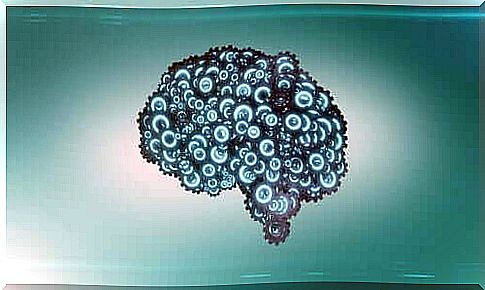The Stimoceiver Chip, A Fascinating Experiment

The experiments with the stimoceiver chip are some of the most controversial neuroscience experiments of all time. However, they are also very fascinating. Spanish scientist José Manuel Rodríguez Delgado implanted a device he invented himself in the brain of an animal to control its behaviour.
Simply put, this device allows a person to control the behavior of biological organisms at a distance. It’s like a remote control that produces electrical impulses in certain areas of the brain. It causes an animal or a human to behave in a very specific way.
José Manuel Rodríguez Delgado was heavily criticized for his invention, although his goal was to better understand our brains. He also wanted to open the way for the rehabilitation of some of the brain functions.
He speculated that what he really wanted was a device to manipulate a human’s mind and direct or condition behavior.
The stimoceiver chip experiment
After creating the stimoceiver, Dr. Rodríguez Delgado conducted an experiment that earned him worldwide recognition. It took place in May 1965 in Cordoba, Spain. Rodriguez chose an arena as the location where he would test his new device.
The arena was small and there were at most a dozen witnesses. He had chosen a bull named Lucero for his experiment with the stimoceiver chip. Witnesses claim that several bullfighters began to challenge the bull by beating at him with their capes, while the scientist waited behind a security barrier.
Then Rodríguez Delgado came out, quite well dressed in a shirt and tie with only a remote control in his hands. He approached Lucero slowly and when he noticed him, the bull rushed at him furiously.
When the bull was close enough to him, the scientist activated his remote control. It sent an electric shock directly to Lucero’s brain and the bull stopped immediately.
Of course, the following May 23, Dr. José Manuel Rodríguez Delgado on the cover of the New York Times. Everyone now knew there was a way to control someone else’s brain.
The inventor of the stimoceiver chip
dr. José Manuel Rodríguez had a scholarship to Yale University since 1946. In 1950, at the invitation of scientist John Fulton, he became a member of the physiology department of the same university. A decade later, he was already testing his new stimoceiver chip.
He conducted his first experiments on cats and then on monkeys. Witnesses say Rodríguez Delgado turned them into mindless creatures who did whatever he wanted. After that, the public display in the Córdoba Arena took place. It was then that the world saw its breakthrough in science.
Rodríguez Delgado pointed out that it was possible to produce targeted stimulation in the brain, specifically in the hippocampus. To do this, he implanted a small radio transmitter in the brain, which could then be manipulated with a remote control. It all sounds quite simple and yet is so complicated.
Testing on animals and humans
The first time Dr. Rodríguez Delgado talked about being able to remotely monitor someone else’s behavior in the late 1940s. Later, he had the opportunity to go to Hall Island, Bermuda.
There he managed to insert tiny stimoceiver chips into the brains of an entire group of gibbons. A short time later, he managed to control the behavior of these animals, in such a way that some of the monkeys rebelled against the group’s alpha males. This is something that could never happen in nature.
Then in 1952 he started experimenting on humans. His subjects were psychiatric patients at the Rhode Island Hospital in Massachusetts. He justified this by saying that he was only experimenting with patients that science could no longer help.
The controversial experiment

Most of the results of the stimoceiver chip experiments are documented in the book Physical Control of the Mind: Toward a Psychocivilized Society , published by Dr. Rodríguez Delgado in 1969. In it he talks about 25 implants in humans, most of which are in people with schizophrenia and epilepsy.
He pointed out that radio transmitters could remain in a person’s brain for as long as they lived and that they were able to generate multiple states and emotions, such as:
- joy
- deep concentration
- extreme relaxation
He was then accused of being part of the CIA’s plans to control the human mind. However, no one knows whether these claims were true or not. What we do know is that the stimoceiver chip was a precursor to other devices currently in the testing process.
For example, they may be able to improve symptoms of conditions such as Parkinson’s disease and obsessive-compulsive disorder (OCD).









